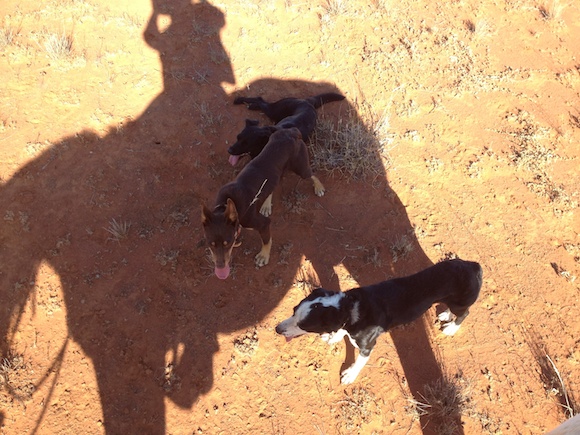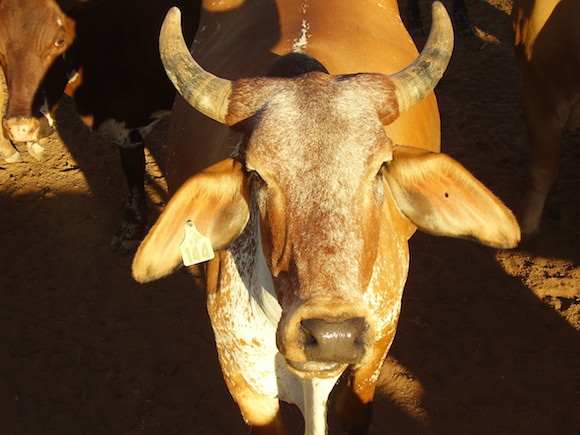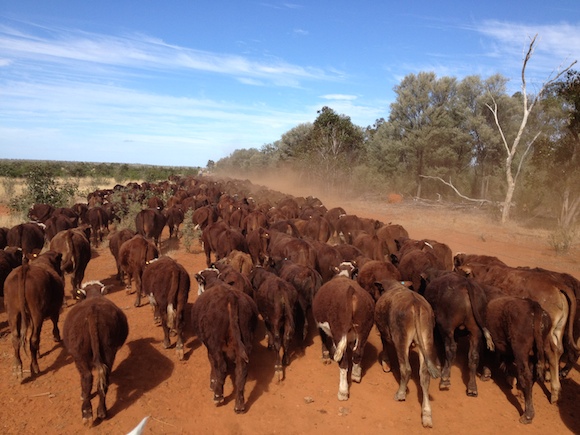Destocking & Wild dogs
Host: Southampton
Written by – Kylie Savidge, Owner, Southampton Station.
April and May were the months we started de-stocking again. All heifers and steers that were saleable went onto the trucks to feedlots and to the Roma Saleyards.
In amongst this were medical appointments, boarding school interviews, injured animals, and school holidays! Talk about squishing it all in at once. Trucks were booked, the gyrocopter was booked, and it was game on again.
We sold off the heifers first. They went to Roma to sale on one of the largest yardings of the year; over 10,000 head of cattle went to sale that day.
Six decks trucked out, (the number you can fit per deck depends on the size of the cattle, full grown cattle fit around 20–25/deck, younger and smaller cattle you can fit up to twice as many) another hard call to make as again all breed on heifers were sold off, save five head that I kept of my own and a few heifers that belonged to the property that were too good to go.
When you are trucking cattle you need to have just the right amount of cattle per deck, too many and cattle can suffocate and be squashed; not enough and the cattle have too much room and can be thrown around in the truck. These animals are our livelihood and it is very important to us that they reach their destination in the best condition possible. In reality most were too good to go to a sale where they would get sent to a feedlot and then onto a plate. The time, effort, love, and care that you take to breed good quality heifers is tremendous and to load them onto trucks to sell is heart breaking at best but there is no other choice to make. Bills must be paid, expenses covered, and there will be nothing for them to eat in a month or two anyhow. And what feed there is needs to be saved for the cows and calves.
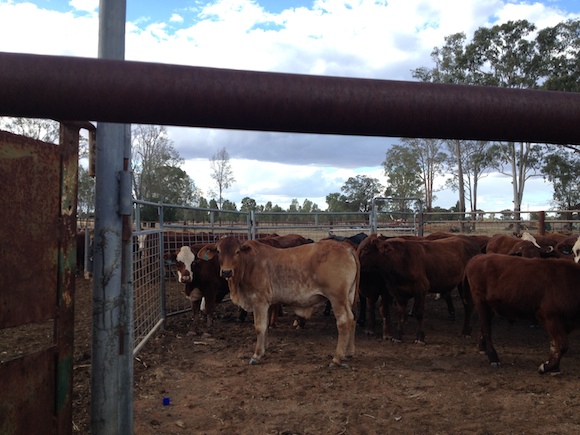 Last weaner calf out of my big Brahman cow Speckles, she sadly was a casualty to the drought.
Last weaner calf out of my big Brahman cow Speckles, she sadly was a casualty to the drought.
They sold relatively well and that helped a little.
The steers were next, eight decks off to sale and feedlot. In total 433 head were sold.
The yards were tidied and everything was put back into place for mustering to start in the June/July school holidays.
We have since completed mustering our cows, and have taken off all but the smallest and youngest calves. They will have to take their chances with their mothers as the season worsens.
School holidays for bush kids very often entails hard work, no holiday to the beach or to the snow, days of mustering, feeding stock, checking waters, taking out mineral supplements, general maintenance, and on it goes. It is by no means all work and no play, the kids get down time and go spotlighting at night for feral pests, pig chasing (which is always on the go, day or night, whether you be doing lick runs or mustering), riding their bikes and horses, trying to outshoot each other on the shooting range we have set up which consists of a dam bank that they place their targets on. All this is done under competent adult supervision.
We are not that far off firing up the chainsaws and Rolls Royce engines in the dozers to start fodder harvesting the mulga again.
We are still at war with the wild dog, with seven dogs in total trapped and shot off Southampton alone for the first four months of 2014.
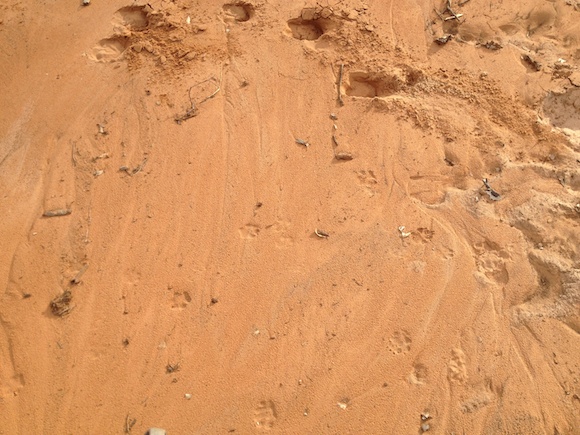 Wild dog tracks in the creek bed.
Wild dog tracks in the creek bed.
I think one of Jack’s highlights of the year was trapping a dog in a trap he had set himself.
These dogs can do huge amounts of damage to your calves and also to the bigger cattle as well. Cattle that don’t die from bites often lose condition and become quite ill, if found they can be treated, often though the injuries are not seen until they come through the yards at mustering time. Scars left by bites also attract penalties at the sales and through the meatworks and the producer will sometimes have a bill to pay or have the cents per kilo drastically reduced for these animals.
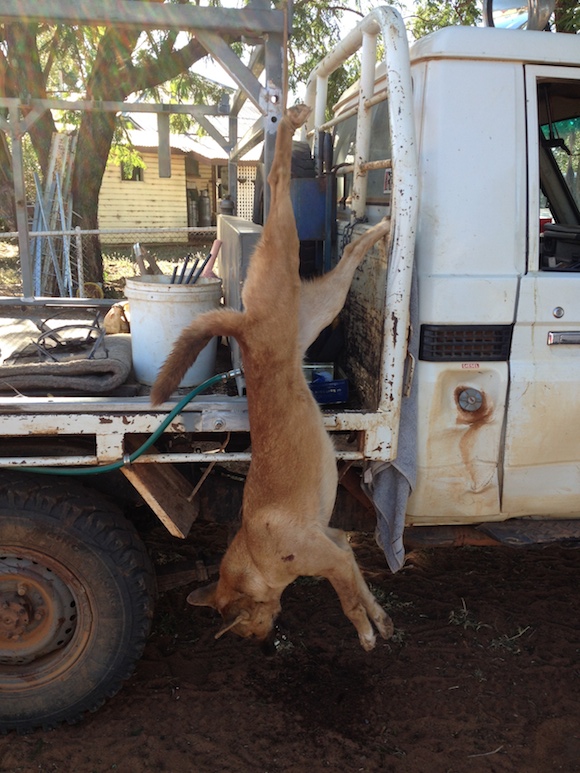 Large bitch caught in May 2014.
Large bitch caught in May 2014.
When you consider that a kelpie can pull a weaner to the ground and they are mostly only half the size of a wild dog, you can only imagine the damage these pests do, even bigger stock are coming through the yards with bites on faces and rumps.

